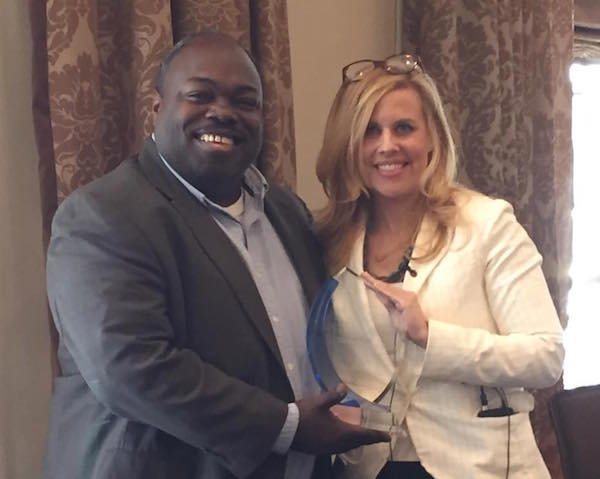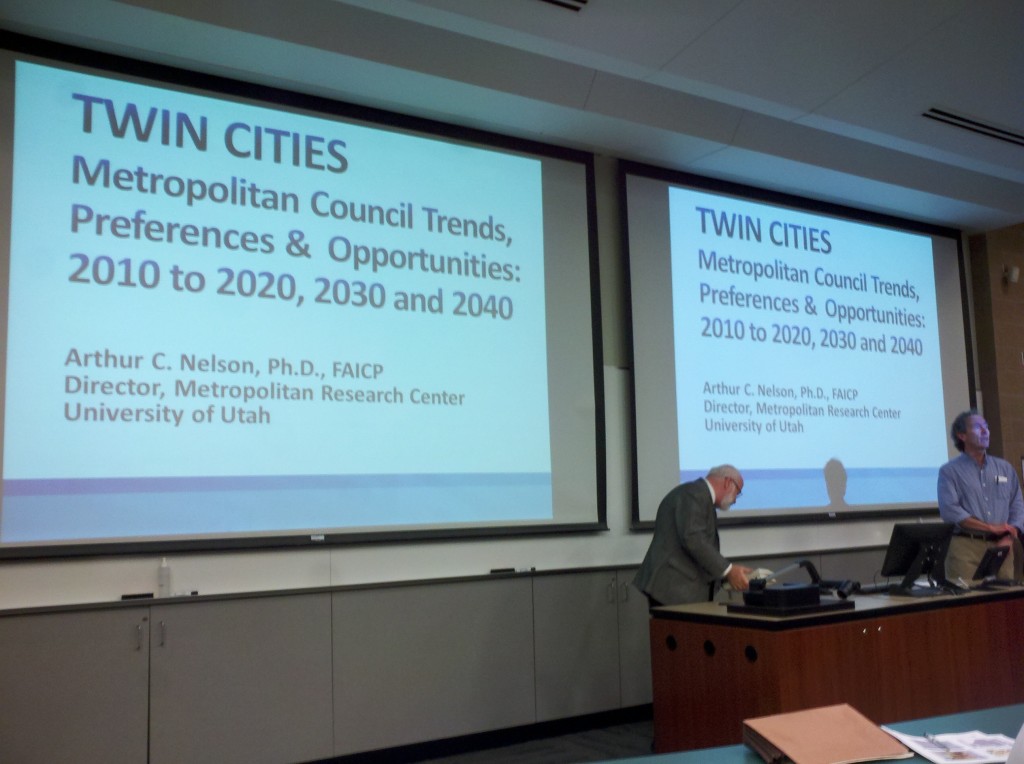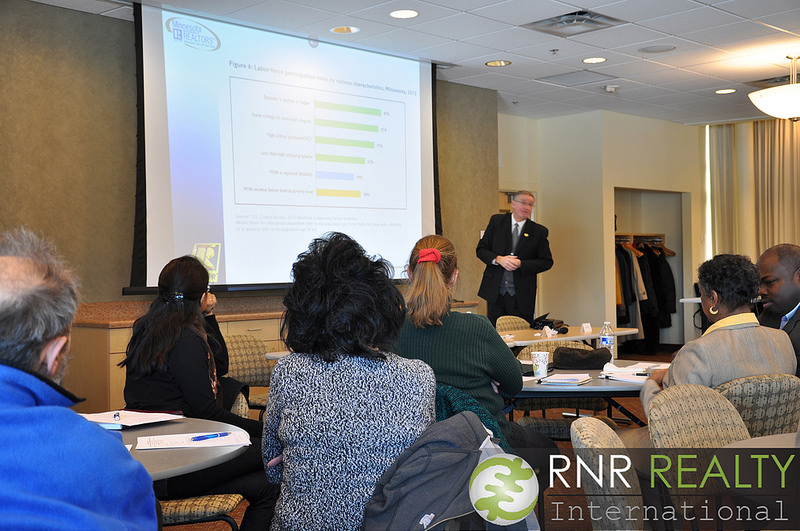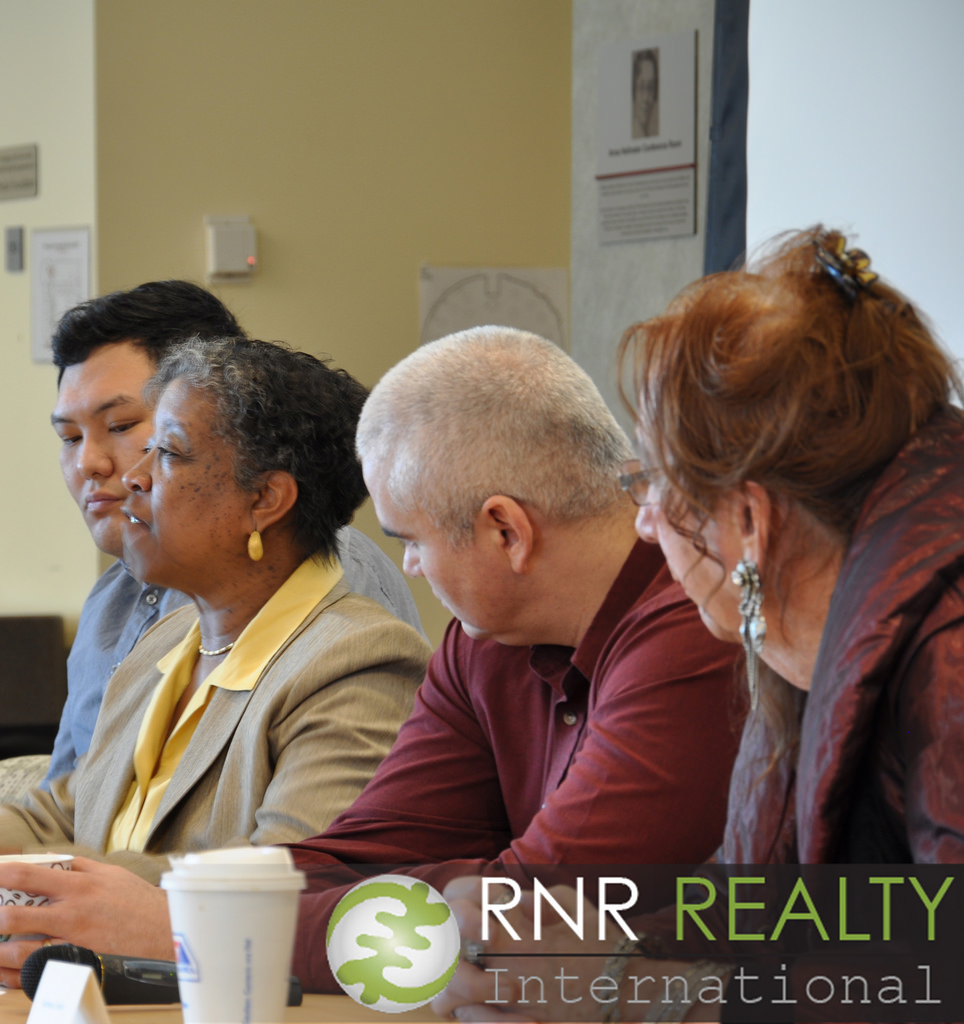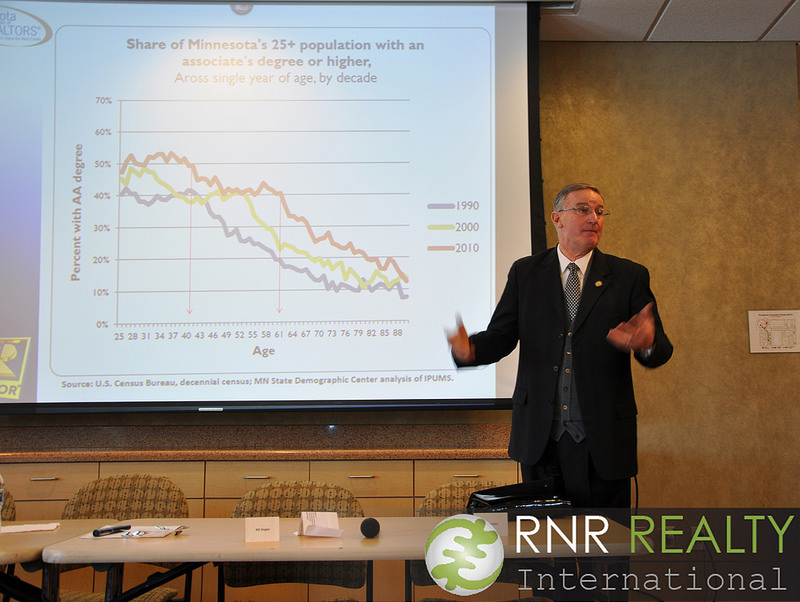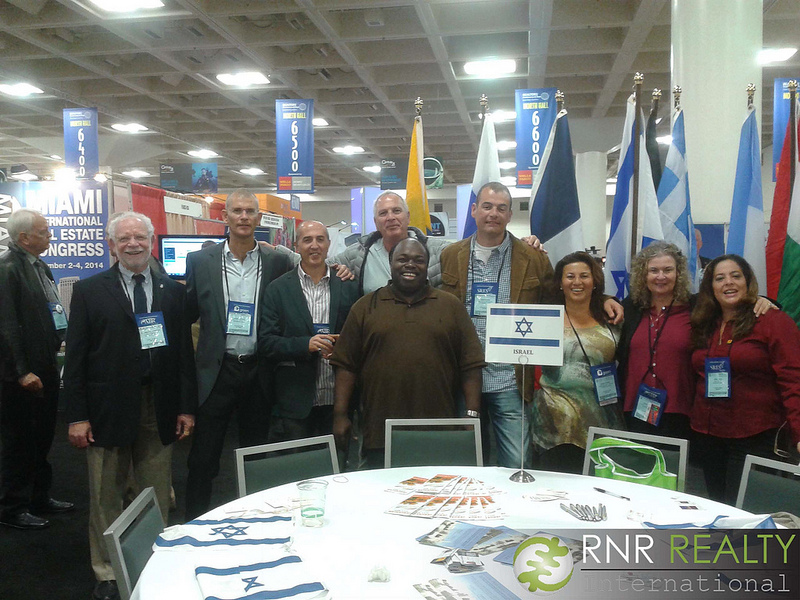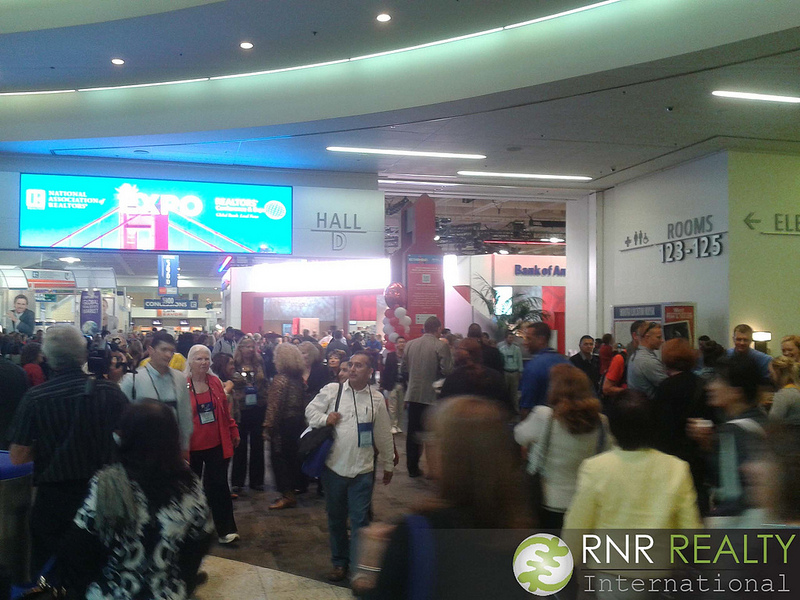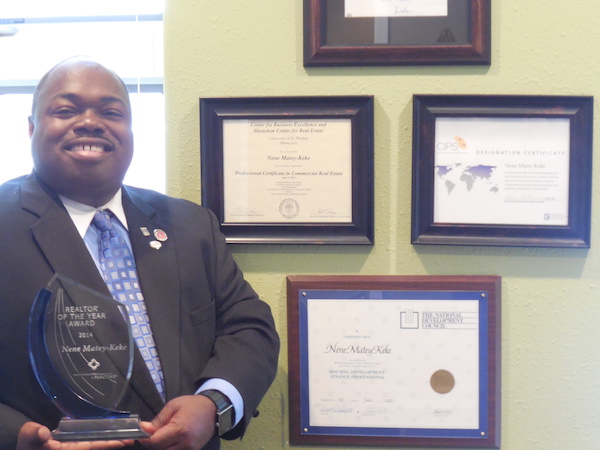
Most companies share a common goal of ending the year better than where they started it. RNR Realty International can certainly say they have accomplished that in 2014. The company’s principal broker and owner, Nene Matey-Keke, was recently named the Minneapolis Area Association of REALTORS® (MAAR) 2014 REALTOR® of the Year. Matey-Keke beat out more than 7,500 Twin Cities competitors to receive this prestigious award for his dedication to his clients, involvement in local and national associations, and volunteerism throughout the community.
“I was humbled and appreciative that all of my efforts to gain a better understanding of and to improve both this industry and my business have culminated in this achievement,” said Matey-Keke. “I’ve spent the better half of my lifetime trying to set forth to be the best at what I do, so to be recognized by my peers for something that I’m so passionate about is the greatest honor that I could have received.”
For those who know Matey-Keke, it’s easy to see why MAAR decided to present him with this award. Driven, determined, and dedicated are just a few words that family, friends, colleagues, and affiliates use to describe the hardworking realtor. As proof, Matey-Keke holds a total of 14 different residential and commercial real estate certifications and designations, and more than 25 additional certifications, which cover financial investment, community development, and construction.
Having been in the real estate industry for almost fifteen years, Matey-Keke has been diligent in continually building not only his multiple businesses, but also his personal knowledge as well as his ever-growing professional network, which he does partly by maintaining membership in numerous associations and committees.
At MAAR, Matey-Keke recently completed his appointment to serve on the Board of Directors and has previously been on the Finance Committee, Nominating Committee and the Young Professionals Network. He will continue his involvement with the Global Business Council and Public Affairs Committee.
At the state level, working with the Minnesota Association of REALTORS® (MNAR), Matey-Keke is on the Board of Directors, Executive Committee, Commercial Forms Sub Committee, Governmental Affairs Committee, Minnesota RPAC Board of Trustees, Professional Standards Committee, and is an active participant of the Strategic Planning session. He also was a founding member of the Diversity Committee and served as the 2014 Chairman. During his tenure, he spearheaded a joint partnership between MNAR and Junior Achievement of the Upper Midwest as one way to address the current homeownership disparity. Junior Achievement now incorporates the value of homeownership for all in its curriculum. Matey-Keke’s commitment to improving diversity within the real estate industry has led to his appointment as treasurer of the recently created local chapter of the Asian Real Estate Association of America – Twin Cities (AREAA).
At the national level (National Association of REALTORS®), Matey-Keke is the Federal Political Coordinator assigned to the 5th District under Congressman Keith Ellison. He is also a member of the Global Business and Alliances Committee, Research Committee, and previously served on the Federal Financing and Housing Policy Committee, Diversity Committee, and Housing Opportunity Committee.
In addition to his extensive REALTOR® association involvement, Matey-Keke also dedicates time to developing the commercial and investment aspects of his business, by actively participating in the Minnesota Commercial Association of Realtors (MNCAR) and the Minnesota Real Estate Investment Association (MnREIA), respectively.
One of Matey-Keke’s many areas of focus is the international community. His attention to this particular market contributed greatly to his REALTOR® of the Year victory, as well as to his overall personal success. It was because of his background and interest in travelling and learning more about other cultures that he created RNR Realty to be an international business. He would like to use his recent accomplishment to push the business even farther globally, in order to help increase clients’ opportunities for relocation, purchasing resort or second properties, investment (Commercial and Residential) as well as to help make homeownership accessible to all worldwide.
In fact, it was his own personal struggle to overcome past adversity and a lack of access to information that motivates him to work with underprivileged communities today. Despite his extensive association involvement – not to mention running multiple businesses – Matey-Keke still finds time to teach first time homebuyer classes for various local organizations, including Model Cities, the African Development Center, and Community Action Partnership of Suburban Hennepin (CAPSH). He has also spoken for the Minneapolis Urban League’s “Realizing the American Dream” class, which hits close to home.
“Being the child of two parents who have had tremendous fights to claim and acknowledge their identities, in addition to overcoming lack of access and exposure to mainstream resources, has always driven me to be the best and to take advantage of all the resources that are available to me now,” said Matey-Keke. “Rising from [my upbringing] and charting my own path with little to no guidance within the real estate industry has been difficult, to say the least. That is, until I became involved with the association. Getting more involved with the association has led me to be a better businessman and has increased my opportunities overall. Starting where I did, it’s that much more rewarding to be the first African-American to receive this honor and be recognized for having achieved a certain level of success in this industry to which I have given myself.”
Recently, Matey-Keke has also begun teaching community education classes in neighborhoods around the Twin Cities, on topics ranging from purchasing investment properties to finding the best resort and second property opportunities, locally, nationally and globally.
REALTOR® of the Year award winners are allowed to select a charitable organization to receive a $1,000 donation in their name. Matey-Keke chose MCASA Homes, a Model Cities program that provides affordable homeownership opportunities to low and moderate income families. He selected this program because he has previously worked with Model Cities, and he strongly believes in MCASA’s mission to put homeownership within everyone’s reach.
Emily Green, the 2014 MAAR President and past REALTOR® of the Year award recipient, helped name Matey-Keke as this year’s winner and presented him with the trophy.
“Nene is a REALTOR® who contributes to the community and advocates at a local, state and national level for homeownership opportunities for all,” Green explained. “His service to our industry has been invaluable and we are proud to honor him with the distinguished designation of REALTOR® of the year.”
Read more here: http://www.startribune.com/nene-matey-keke-named-realtor-of-the-year/286252901/




